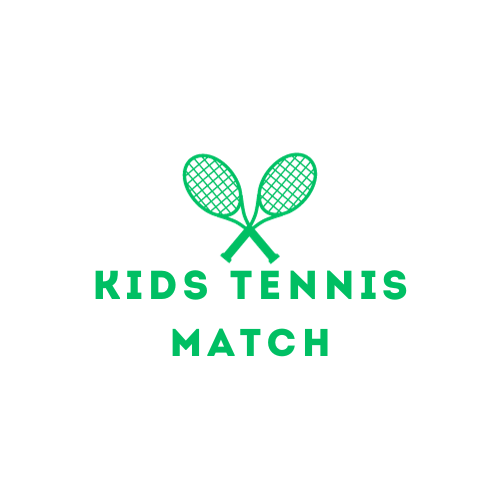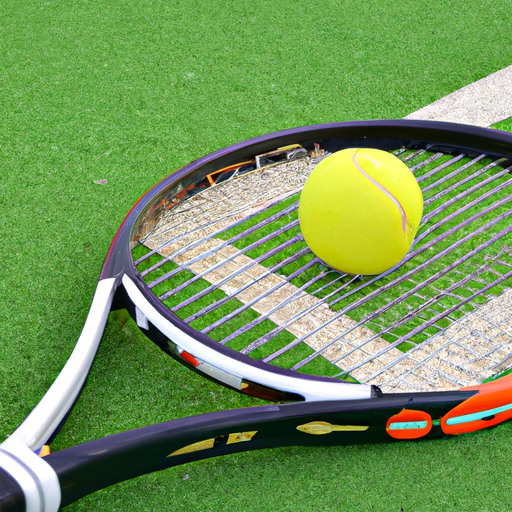If your child has recently shown an interest in tennis, you may be wondering what are the basic rules of this sport that they need to know. Whether they’ve seen it on TV or just heard their friends talk about it, understanding the rules is essential for them to enjoy the game. In this article, we will take a closer look at the fundamental rules of tennis for kids, allowing them to step onto the court with confidence and have a blast while playing. From serving to scoring, we’ve got you covered!
Equipment
Tennis is a fun and engaging sport that can be enjoyed by people of all ages, including kids! To get started with tennis, you will need the right equipment. The most important piece of equipment is the tennis racket. It’s essential to choose a racket that is the right size for your child. Rackets come in various sizes, so be sure to pick one that is appropriate for your child’s age and size. This will ensure that they can handle the racket easily and play comfortably.
Next, you will need tennis balls. Tennis balls can vary in size and bounce, so it’s important to choose ones that are suitable for kids. Opt for softer balls that are specifically designed for children. These balls are easier to hit and control, making it more enjoyable for kids to play.
Lastly, you will need a tennis court to play on. A tennis court is a rectangular playing area with specific markings. There are different types of tennis courts, such as clay, grass, and hard courts. For kids just starting out, it’s best to play on a smaller court, commonly referred to as a “mini court” or “red court.” These courts are smaller in size and have shorter dimensions, making it easier for kids to cover the court and play the game.
Scoring
Scoring in tennis can sometimes be a bit confusing, especially for kids who are new to the game. However, once you understand the basic scoring system, it becomes much easier to keep track of the score.
In tennis, each game is divided into points. The scoring progression is as follows: love, 15, 30, 40, and game. When a player wins the first point, the score is called “15.” If they win the next point, the score becomes “30.” Then, if they win another point, the score changes to “40.” If both players have a score of 40, it is called “deuce.”
To win a game from deuce, a player must score two consecutive points. If they win the first point after deuce, they earn “advantage.” If they win the next point, they win the game. However, if they lose the point after having an advantage, the score goes back to deuce.
Serving
Serving is an essential skill in tennis, and it’s important for kids to learn how to serve properly. When serving, there are a few key aspects to keep in mind.
To start, the player serving must stand behind the baseline, which is the back line of the court. They then toss the ball into the air and strike it with their racket before it touches the ground. This is called the racket toss.
Another important aspect of serving is avoiding a foot fault. A foot fault occurs when the server’s foot touches or crosses over the baseline during the serve. To prevent a foot fault, it’s important to have good foot placement and ensure that both feet stay behind the baseline throughout the serve.
When serving, the ball must be hit into the service box, which is a rectangular area diagonally opposite the server. It is divided into two halves, the deuce side and the advantage side. To score a point, the server must hit the ball into the service box on the opposite side of the net, making it challenging for the opponent to return the serve.
Returning
Returning the ball is equally important as serving in tennis. After the server serves the ball, the receiver must try to return the ball over the net and into the opponent’s court. There are a couple of rules to keep in mind when returning.
One popular method for returning the ball is called the TenniSquirt. This technique involves hitting the ball gently in a downward direction, allowing it to bounce once before hitting it back over the net. This ensures better control and gives the receiver a higher chance of successfully returning the ball.
Another important rule for returning is the three-bounce rule. This rule applies to beginner players and allows them to let the ball bounce up to three times before hitting it back. This helps beginners develop their coordination and timing skills, making it easier for them to participate and enjoy the game.
Let
During a tennis match, there may be instances when the ball hits the net, affecting its trajectory. When this happens, it is called a “let.”
A let occurs when the server’s ball hits the net and still lands in the correct service box. In this case, the server is allowed to replay the serve without any penalty. It’s important to note that if the ball hits the net and lands outside the service box, it is considered out.
Fault
A fault is a term used in tennis when the server’s serve does not meet certain requirements. There are a few types of faults to be aware of.
The first type of fault is a tossing error. A fault is called if the server fails to toss the ball into the air and make contact with it before it touches the ground. It’s crucial for the server to maintain control over the toss and execute the serve correctly.
Another type of fault is an out-of-bounds serve. This occurs when the server’s ball does not land within the boundaries of the service box. To avoid faults due to out-of-bounds serves, players must practice their aim and ensure the ball lands within the designated area.
Lastly, a double fault is called when the server commits two consecutive faults. This means that the server’s serve failed twice in a row, resulting in a loss of the point. Double faults can be frustrating but serve as an opportunity for players to regroup and focus on their next serve.
Crossing the Net
In tennis, it is important to understand the rules regarding crossing the net. Crossing the net at the wrong time can result in penalties and the loss of points.
During a point, players are not allowed to cross the net and enter their opponent’s side of the court. This is known as the “no cross” rule. The net acts as a barrier that separates the players’ areas of play, and crossing it would disrupt the flow of the game.
Additionally, if the ball touches the net and still lands in the correct area of the opponent’s court, it is considered a legal shot. However, if the ball hits the net and fails to cross into the opponent’s court, it is deemed out of play. Players must be aware of these rules and adjust their strategies accordingly to avoid penalties.
In and Out
Determining whether a shot is in or out can sometimes be challenging, even for experienced players. There are specific rules and guidelines to follow when determining the validity of a shot.
The lines on the tennis court play a crucial role in determining whether a shot is in or out. If the ball touches any part of the line, it is considered in. However, if the ball does not touch any part of the line and lands outside, it is considered out.
In close cases where it’s difficult to determine whether the ball touched the line or not, players can use the benefit of the doubt and call the shot as in. It’s important to maintain fairness and sportsmanship, as incorrect calls can impact the outcome of the game.

Double Bounce
One fundamental rule in tennis is the double bounce rule. This rule ensures fair play and equal opportunities for both players.
According to the double bounce rule, each player must allow the ball to bounce once on their side of the net before returning it. This means that if a player receives a shot and fails to return it before it bounces for the second time, they lose the point.
The double bounce rule is particularly important for beginners as it provides them with ample time to react and develop their skills. It also encourages longer rallies and more engaging gameplay.
Etiquette
Tennis is not just a sport; it is also a display of good sportsmanship and etiquette. It is important for kids to learn and practice proper etiquette when playing tennis.
Respecting your opponent is essential in tennis. Treat your opponent with respect, regardless of their skill level or age. Shake hands before and after a match, and congratulate the winner. Displaying good sportsmanship builds a positive environment and enhances the overall experience of playing tennis.
During the points, it’s essential to maintain a quiet and focused demeanor. Avoid making excessive noise, talking, or distracting your opponent while they are playing. This helps maintain a fair and respectful play environment for both players.
Lastly, always remember to show good sportsmanship, whether you win or lose. Congratulate your opponent on a well-played match and display grace and humility in victory or defeat. Good sportsmanship is an integral part of tennis and helps create a positive and enjoyable experience for everyone involved.





